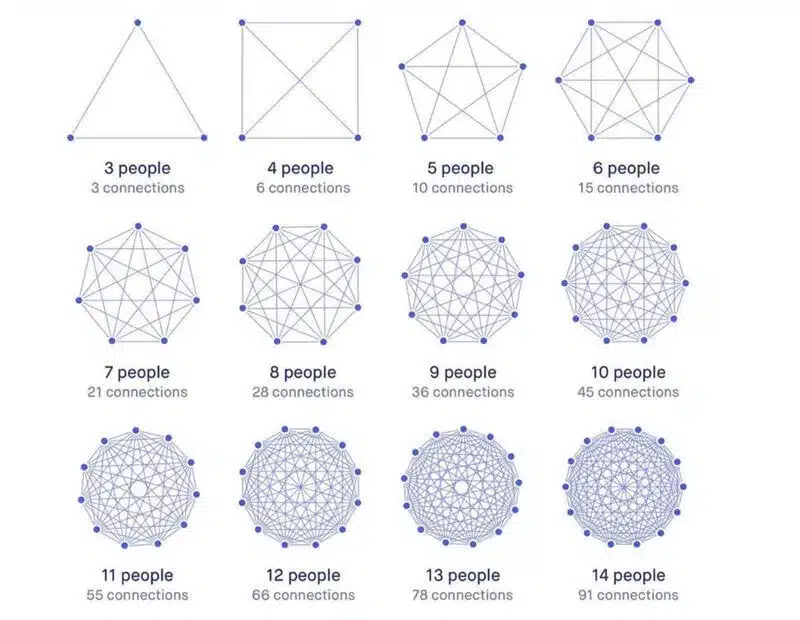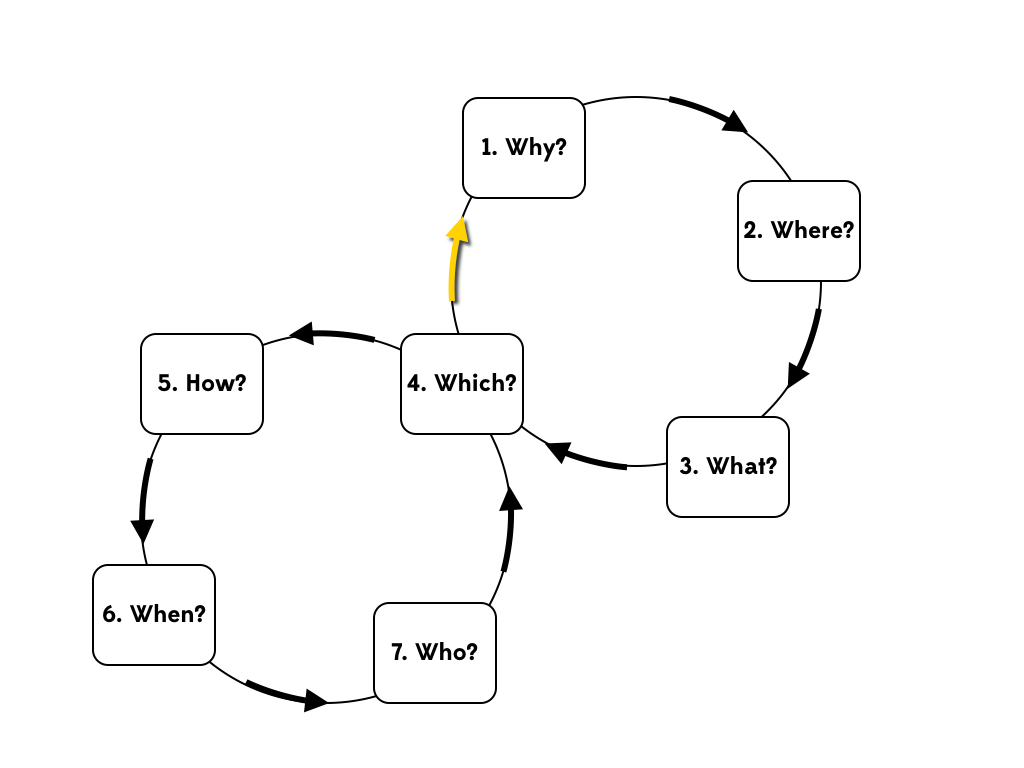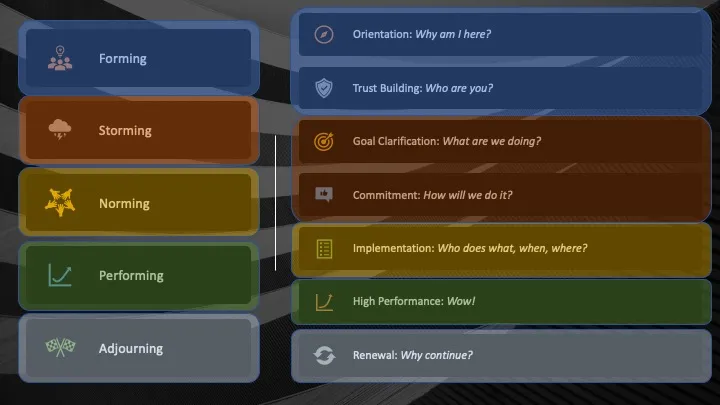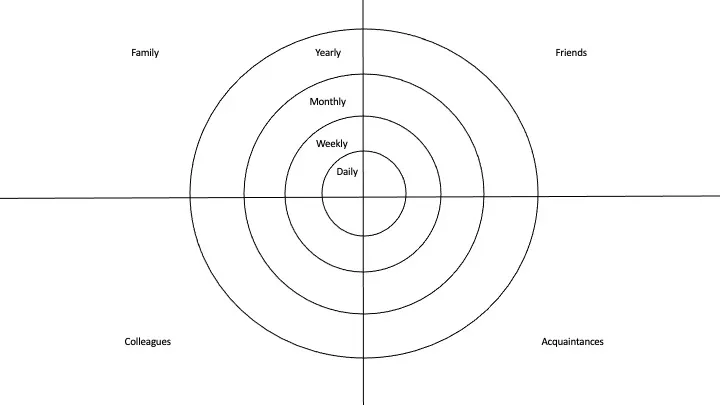Which meetings do you have coming up? How will you ensure that your next meeting is a success?
Most of us have a love-hate relationship with meetings. We get frustrated with how much time they take up but also appreciate that meetings, at some level, are important. So, if we are going to commit time to them, what are the parameters that will make the meeting productive?
If you want a meeting to go well it is vital to prepare effectively. As illustrated in my last post, by answering 7 simple questions you can plan for success. To build on these questions, this post explores the main types of meetings and the subtle differences between them. This is knowledge that has been won through years of not only running gatherings but also through coaching other facilitators and teaching about meetings on leadership courses.
There are lots of types of meetings but most fall into the following categories:
- Briefing
- Teaching
- Decision-making
- Problem-solving
- Brainstorming
- Team building
- Kick-off
- Progress
- Planning
- One-to-one
Each of these will be considered in more detail but I appreciate it is a long read so you may want to bookmark this article, focus on the section relating to your next meeting, and then come back for reference.
Briefing
These are short meetings to convey important information.
Why have this meeting?
These meetings take place when critical information needs to be communicated.
What does success look like?
Success is that the people that attend the meeting receive and understand the critical information.
Where should it take place?
The venue should have minimal distractions. Find a place that helps people focus.
Who should be invited?
Be specific. Ensure you target the people who need to hear and understand the content.
When and how long?
If a briefing is of a critical nature, then the timeline is likely to be a short one. This sort of meeting should be brief – as the title implies – and the content should just cover the essentials. In my experience, these sorts of briefs can be less than 20 minutes, including questions.
How should it be run?
These didactic meetings are generally one-way, followed by questions. Preparation is key if the meeting is to be concise. Using a single visual aid – such as a single slide, plan or map – can aid focus.
Which options should I consider?
Online is an option for briefings, especially if timelines are tight and teams are dispersed. But remember, people often find it harder to focus online so reinforce the critical points.
Teaching Forums
These are meetings to disseminate useful information and ideas.
Why have this meeting?
To share learning and educate people.
What does success look like?
Attendees should feel they have learned something important and worthwhile.
Where should it take place?
The venue is driven by the size of the audience; therefore, it could be anything from a small meeting room to a huge auditorium. Holding this sort of meeting online is a good option as this allows maximum attendance (and makes the gathering easy to record).
Who should be invited?
Make sure you target people you need to attend but beyond that education meetings can have a more open invitation.
When and how long?
Teaching sessions can be programmed far in advance to maximise attendance. In terms of length, aim for less than 40 minutes. People’s ability to maintain their attention and retain knowledge goes down sharply beyond this.
How should it be run?
Success is dependent upon the quality of the presenter’s preparation and delivery. For example, if I am preparing new material to deliver to a large audience (and want to do this without reading from notes on stage) then I will plan for an hour of preparation for every one minute of delivery time. This may sound extreme but looking effortless takes a lot of effort.
Which options should I consider?
Consider ways to make things as interactive as possible. With smaller groups, they can be made more interactive, with questions being fired both ways during the session. This is harder with audience sizes beyond around thirty, so for larger audiences consider online tools such as apps for questions or quick polls such as Slido.
Decision-making Meetings
Here the purpose and outcome of the meeting are shaped by a specific decision or set of choices.
Why have this meeting?
Because a choice needs to be made to allow progress.
What does success look like?
A decision is made and recorded.
Where should it take place?
The venue could take various forms, but as with briefings, ensure that potential distractions are reduced to keep people focussed.
Who should be invited?
Invite only the minimum number possible to ensure a decision can be made. The more people, the harder to make a choice but, if you don’t have the right people (i.e., those with the right authority) then the choice won’t be official.
When and how long?
There is no hard and fast rule here, but it is worth setting boundaries as a deadline will help ensure a decision. The deliberation will generally take as long as you give people so don’t leave it open-ended. In my experience, if you have not achieved consensus in an hour then you either have the wrong people present, the wrong information or the wrong motivation in the team.
How should it be run?
This requires careful facilitation. The facilitator may not be the person of authority, and it often helps if they aren’t, as they can remain impartial and focused on the process. Whoever leads needs to ensure that the critical information is shared (as per a brief) and then that everyone has a chance to contribute and comment.
Which options should I consider?
Get people to engage with the pertinent information before the meeting. This will speed up the process of getting to a decision when people gather. If you want to influence a decision, meet up with individuals before the meeting and set the conditions.
Problem-solving Gatherings
In this case, it is a problem that is the focus of the meeting.
Why have this meeting?
Because there is an issue that needs to be resolved in a timely manner.
What does success look like?
Coming up with a decision, strategy, or plan to address the problem.
Where should it take place?
Pick a space which allows movement, breakouts and access to whiteboards, flipcharts and other aids.
Who should be invited?
Think about gathering the best minds to help solve the issue. This could well be people outside your team. The number is a balance between focus (better with fewer than 10) and diversity of thought (which might require more). My advice is to keep numbers below 20.
When and how long?
This depends upon the problem. Therefore, I generally do an initial meeting for problem analysis, with the expectation there will be a follow-up session to think about actually planning a solution.
How should it be run?
The most important thing is to start with proper problem analysis. If you start trying to sort the problem without identifying the nature of the problem, you are likely to come up with the wrong solution.
Which options should I consider?
Consider using the Grint or Cynefin problem typologies to identify the type of issue.
Brainstorming Workshops
These meetings are all about generating new ideas or approaches.
Why have this meeting?
Because you want to foster innovation and creativity.
What does success look like?
A list of novel ideas that can be explored further and new mindsets within the team.
Where should it take place?
Find an environment that is inspiring and challenges people’s normal frame of reference (this is generally not in your normal office space). You will want space that allows you to bring everyone together as well as break out space and as many means as possible for capturing ideas (flipcharts, post-its etc)
Who should be invited?
10-20 people is a good number for brainstorming. Ensure that there is cognitive diversity in the group. It is good to have some outsiders (or mavericks) to challenge assumptions and help avoid groupthink.
When and how long?
Creative sessions generally need more time and I often run them over the course of a day. But the day then needs careful planning, so each session is focussed on a specific outcome and people maintain their energy and focus.
How should it be run?
Have a facilitator who is just focused on running the meeting, not on the ideas. Keep individual sessions below 90 minutes and keep gathering people together to cross-fertilise ideas.
Which options should I consider?
If you have never facilitated this type of meeting before you can try the World Café workshop approach.
Team Building Events
Every team requires proactive effort to build them up, but the approach depends upon where they are in terms of team development.
Why have this meeting?
To help the team progress in terms of cohesion and performance.
What does success look like?
That the team has moved or made significant progress towards, the next stage of their team development.
Where should it take place?
This also depends on the development stage. For example, if they are forming you might want them in the new place where they will work together. If they are storming you might want a neutral space, removed from the normal workspace.
Who should be invited?
It is self-explanatory that you need all the members of the team. The challenge is getting all of the team members there as people often see team-building sessions as of lesser importance.
When and how long?
These sorts of meetings usually need to be planned with plenty of lead time, as they are often longer in length. Most team-building sessions I have been involved with are at least a half-day and often run for several days.
How should it be run?
There is flexibility here but ensure that every section or session has a defined purpose. Whether you are throwing around ideas or throwing axes, make sure everyone knows why. And ensure maximum engagement and contribution from all team members.
Which options should I consider?
Use the Drexler-Sibbet team performance model to identify the most important question that your team needs to answer at that point in time. Use that to focus your agenda.
Kick-off Meetings
Any new initiative should have a proper kick-off.
Why have this meeting?
Because a new team or project is being initiated.
What does success look like?
That the team understand the new task and their role in achieving it.
Where should it take place?
Try to pick somewhere that helps people envisage or focus on the project.
Who should be invited?
This should be for core team members primarily and, as with team building, the challenge is making sure the whole team is there.
When and how long?
These meetings don’t need to be as long as team-building sessions. For a simple project, this could be less than an hour. For something larger, a half or full day is worth considering so you can combine some team-building elements in too.
How should it be run?
Start with the overall vision. In other words, start with the why, getting their buy-in, before exploring the whoand the how.
Which options should I consider?
Take people on a visit relevant to the task. For example, if you are a construction manager, gather the team on the construction site. If it is a community project, walk the team around the local environment. If it’s a new product, take them to the factory. Help them see the vision.
Progress Updates
Most teams have these sorts of meetings, but these need to be well-disciplined to be effective.
Why have this meeting?
To report back on progress (for example on a project, for an operation or given budget)
What does success look like?
That the leader or manager understands the situation and any relevant implications (e.g. things relating to time, quality or budget).
Where should it take place?
These meetings are routine and usual office meeting spaces are therefore suitable.
Who should be invited?
Only the people who need to know (primarily the supervisor) and the key contributors. It does not need the whole team and other stakeholders unless this adds specific value.
When and how long?
These meetings should be planned in as part of the operational routine or to reflect key milestones in a project. Keep them as short as possible; the key danger with these meetings is the feeling that people need to say something (just to sound important or busy).
How should it be run?
Share the critical information first, then give the detail as needed. This is often referred to as giving the BLUF (the Bottom-Line Up Front). As with the brief, keep things punchy then leave time for questions and discussion.
Which options should I consider?
Keep the update concise but hold other detail in reserve. For example, if I am presenting slides, I will create a small number of briefing slides (we are talking single figures) but have the extra data on slides at the end of the pack that I can refer to if needed when addressing questions. I will also have people on standby. They don’t have to be in the meeting necessarily but can be called in as needed to answer specific inquiries.
Planning Meetings
This covers meetings that are future focused (compared to progress which is usually looking back).
Why have this meeting?
When you need a plan! This is obvious but planning meetings provide an opportunity for a leader. You can just direct a team but involving them in planning creates ownership and deeper commitment.
What does success look like?
To have a credible action plan. Something that can be communicated and executed.
Where should it take place?
As with brainstorming meetings, it is good to have a flexible space where you can have breakouts, move around and use whichever aids necessary for effective planning.
Who should be invited?
In the 8-18-1800 rule, planning tends to fall between the 8 (best for decision-making) and the 18 (for brainstorming). My advice is, if you have more than 8 people, divide the planning up and have small groups working on different elements.
When and how long?
This depends on the criticality of the issue (how urgent it is) and the complexity of the task. Commonly, these can be anything from 1 hour to 1 day, therefore do a time appreciation before you start. In other words, the planning meeting needs a good plan to get the result!
How should it be run?
Run the meeting like a project. Have specific tasks and deadlines. As with brainstorming, set regular milestones for sharing progress and ideas.
Which options should I consider?
Consider, has there been a problem-solving meeting beforehand? As noted previously, make sure the issue has been properly analysed before rushing into planning.
One-to-one Meetings
Although simple in theory, due to being two people, these are just as important to plan as a large gathering.
Why have this meeting?
Person-to-person meetings can include interviews, coaching, mentoring, and performance meetings.
What does success look like?
This depends upon the type of one-to-one meeting, but the important part is to define what success is. Many people forget to define this when just meeting another person.
Where should it take place?
This is also dependent upon the nature of the meeting. For example, if it is a formal meeting such as an interview you may prefer an office meeting room. If it is a less formal mentoring session you might choose to get away from the office. As with other meetings, think about how the environment will help or hinder your stated outcome.
Who should be invited?
Obvious in this case, being just one other person, but consider how you invite them. The level of formality and detail of the invitation will set the expectation for the content of the meeting.
When and how long?
Again, there are no hard and fast rules but, in my experience, a formal meeting – such as challenging someone over discipline – should be short and concise, a matter of minutes. Coaching and development meetings can be more relaxed and longer. I tend to plan 60-90 mins in these cases which allows for some preparation beforehand and noting taking afterwards.
How should it be run?
Have a plan. If it is a formal meeting, pre-prepare what you are going to say (see how to manage difficult conversations) and if you are going to do a coaching style session, adopt an approach (such as the GROW model) to structure the meeting.
Which options should I consider?
If the meeting is less formal, consider going for a walk. There are many benefits to walking meetings and it is my preferred method for coaching, mentoring and other discursive one-to-one interactions.
The Art and Science of Meetings
There are few hard and fast rules for meetings. It is a mixture of science and art. Even the typology used here, identifying the most common sort of meetings, is just a rule of thumb. You will find plenty of alternative lists and there is little academic work on the classification of meetings.
There are overlaps between types of meetings, and situations vary, therefore it is a matter of judgement as to how you approach them. But I hope that my experience – gained over many years – will be helpful as a guide as you start your planning.
And if you disagree with some of the classification or advice on meetings then that is fine! It just means that you are thinking critically about the sort of gathering you want to have. And that is vital, as the worst get-togethers are not the ones that don’t follow these guidelines, they are the ones that people have not thought about, the sort that people just attend. We all have a responsibility to eradicate these!






